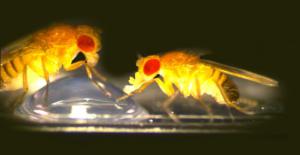Content:
Fruit flies (Drosophila melanogaster) are used as model organisms for studying a variety of physiological functions. The fly tongue includes 68 so-called "gustatory receptors" (GRs) that play important roles in sensing sugars as well as bitter compounds. Nonetheless, determining which combination of GRs contributes to detecting a particular noxious compound remains difficult because they are composed of many subunits.
Now, UC Santa Barbara's Craig Montell and colleagues have identified three fruit fly GRs required for a response to the noxious amino acid L-canavanine. The principal nonprotein amino acid of certain leguminous plants such as clover and alfalfa, L-canavanine is used as an insecticide and is toxic to fruit flies. The researchers' findings appear in the journal Nature Communications.
For the past decade, scientists have been seeking to establish whether any gustatory receptors (GRs) in fruit flies that sense bitter and other aversive compounds are cation channels. These channels, which have the ability to open and close in response to chemical or mechanical signals, activate neurons by letting in positively charged molecules such as calcium or sodium.


